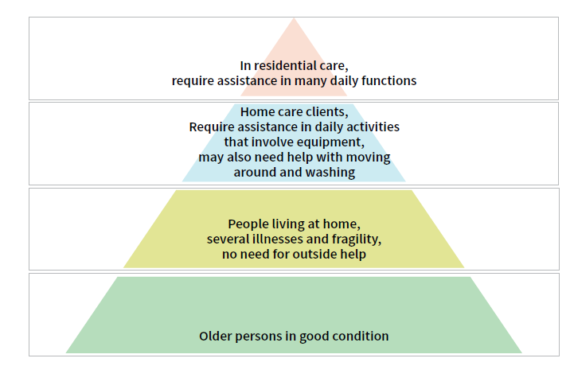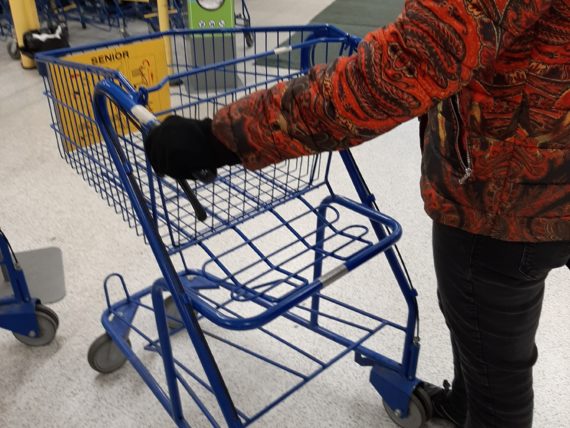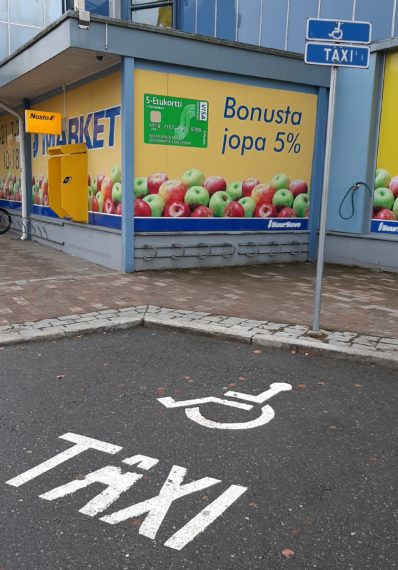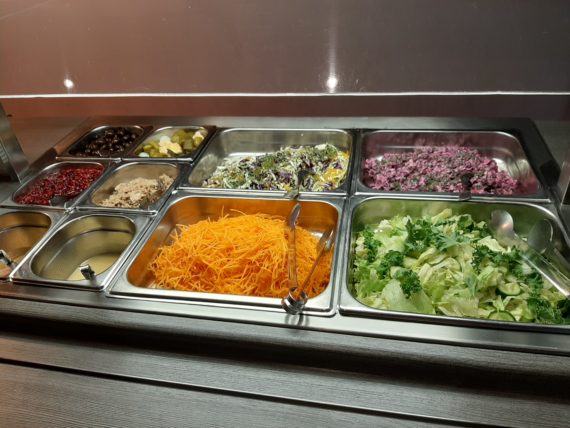During the years 2021–2022, the Ikäruoka 2.0 project promoted multisectoral collaboration to develop food related services for older adults. The aim was to innovate and test new services that would improve older adults’ sense of community and functional capacity and be available in their own residential area. A user-centered approach was adopted to ensure that these new services would be of high quality, attractive, acceptable and affordable particularly from older adults’ perspective.
The project was carried out in four pilot areas in close cooperation with local operators. The pilot areas included different kinds of residential areas: Järvenpää, an urban area in Southern Finland, Jyväskylä city centre and Juva and Mäntyharju municipalities, representing rural residential areas. How this development work took place in the South Savo regions of Juva and Mäntyharju is described below.
Iterative development in improving regional food related services
The process which our project team tested in this regional development collaboration based on the iterative design methodology. This methodology aims at a continuous cyclic development process of prototyping, testing, analysing, and refining the service based on what has been learnt from the tests. Our process also applied the basic principles of service design, that is, the systematic innovation process with four steps: discover, define, develop and deliver. Both iterative development and service design offered a practical, customer-oriented approach to the collaborative service development with customers, service providers and other stakeholders.
Figure 2 shows the detailed steps of the iterative process we modified for the purposes of the Ikäruoka 2.0 project’s regional development collaboration in the South Savo pilot areas.
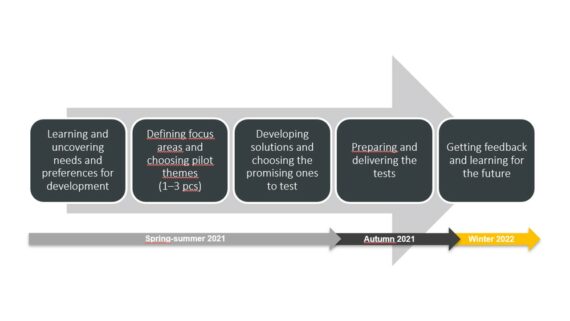
Figure 2. There were five steps in the multisectoral development collaboration in the pilot areas of Juva and Mäntyharju.
Active collaboration in multisectoral regional development groups
The regional activities started by contacting the local stakeholders from the public, private and the third sector (see Figure 3). We invited them to participate in informal, collaborative development groups and interviewed them briefly to find out their preliminary interests and needs for development in local food related services. We also inquired which other stakeholders should be recruited to the development group or at least be informed of the project to ensure that as many essential local parties as possible would know and/or participate in the development.
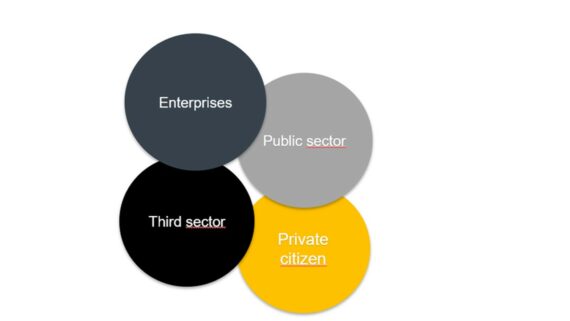
Figure 3. The collaborative development groups of the South Savo pilot areas were multisectoral.
Everyone interested in improving the local food related services for older adults were welcomed to join this regional collaboration throughout the process. All in all, over 70 representatives of different stakeholders – about 35 per pilot area – contributed to the co-creation of new services and test preparations.
The list below summarises the parties of the regional development groups in the South Savo pilot areas Juva and Mäntyharju.
- Eight food service companies and one grocery store
- Food service providers of the municipalities
- The South Savo social and health care authority (Essote)
- Members of the senior citizens’ councils
- Representatives of the municipalities’ staff (public transportation, local business promotion)
- Several associations in Juva and Mäntyharju: staff members and volunteers, including for example
- local associations of three different pensioners’ organisations
- local associations of Rural Women’s Advisory Organization
- local associations of The Martha Organization
- local associations of some patients’ organisations
- associations of several villages of the pilot municipalities
- Parishes of the municipalities
- Representatives of older adults
We launched the regional development groups in the virtual kick-off events arranged separately for each pilot area. The following collaborative activities included 7–8 remote or live workshops per pilot area and several meetings with the single parties or sub-groups of the regional development groups.
Typically, the service providers, older adults and other stakeholders contributed together to most steps during our development process (see Figure 2). However, the service providers were independently in charge of the practical arrangements and the production of the test services, such as providing catering for events that we named Dining together events.
Need for development
During the development process, we learnt that older adults of the pilot areas had many development needs concerning food related services. Services with need for development are listed below:
- Dining together in public establishments or at home
- Assisting and advisory services for shopping
- Marketing and availability and accessibility of the information about food related services
- Transportation and delivery services
- Entertainment, activities and/or advisory services along with dining together
- Local food events for older people
- Reusing school kitchen food waste for preparing low-price meals
- Promoting the use of service vouchers for cheaper food services
The next step in the process was to prioritise the above themes. The locals found the first four themes as the most essential ones, and based on their choices we began to plan the tests and looked for new partners, for example, taxi entrepreneurs, to join our development activities.
We had a criterion that we would only arrange tests for which local service providers were committed to. It was also important that potential customers, such as representatives of pensioners’ associations, were truly interested in testing the new services.
Based on these criteria and prototypes, we planned and delivered 10 tests of Dining together events with different food service providers. Also partners from our development groups, such as a few associations from Juva and Mäntyharju and local associations of pensioners’ organisations joined the tests.
Customer feedback was collected after events. Participants gave mainly very positive feedback. The older adults participated in the events made a point of being together and socialize with other participants, not only good food. Planning and testing events together increased the interaction between the service providers, older adults and other stakeholders and encouraged them to cooperate with others.
Customer feedback was collected after the events, and it was mainly very positive feedback. The older adults participated in the events appreciated getting together and socialising with other participants, not only good food. Planning and testing events together increased the interaction between the service providers, older adults and other stakeholders and encouraged them to cooperate.



